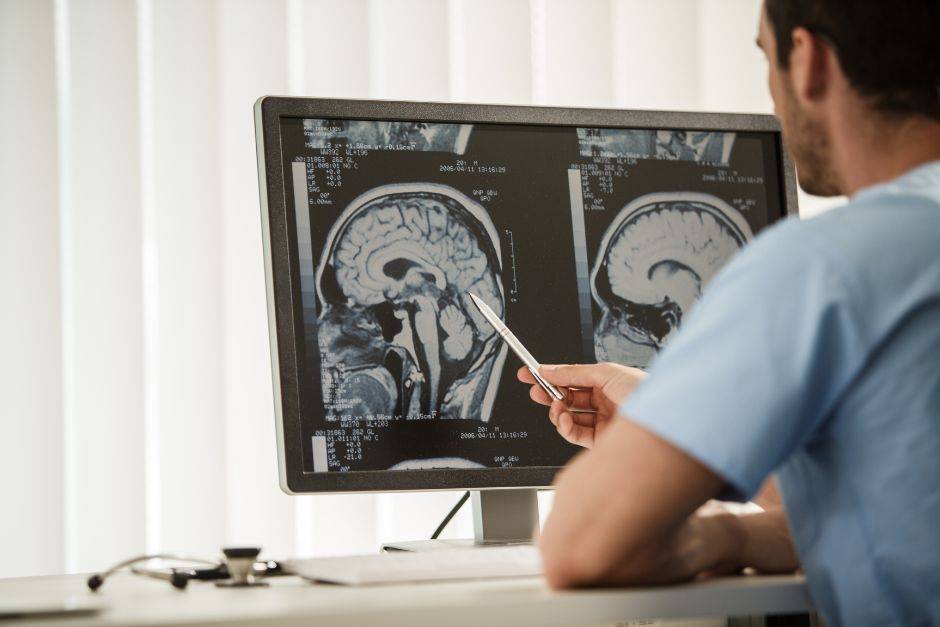The article highlights the aspects related to certain specific hazards associated with the use of medical devices in the magnetic resonance environment – namely, displacement force and torque.

Table of content
The article highlights the aspects related to certain specific hazards associated with the use of medical devices in the magnetic resonance environment – namely, displacement force and torque.
The Food and Drug Administration (FDA or the Agency), has published a revised guidance document dedicated to testing and labeling medical devices for safety in the magnetic resonance (MR) environment.
The document provides an overview of the applicable regulatory requirements, as well as additional clarifications and recommendations to be taken into consideration by medical device manufacturers and other parties involved to ensure compliance to it.
At the same time, provisions of the guidance are non-binding in their legal nature, nor are they intended to introduce new rules or impose new obligations. Moreover, the authority explicitly states that an alternative approach could be applied, provided such an approach is in line with the existing legislation. It has been agreed with the authority in advance.
The scope of the guidance covers, inter alia, the matters related to the most critical hazards associated with the use of medical devices in the magnetic resonance environment.
Addressing Hazards for Medical Devices in the MR Environment
The MR environment, which encompasses settings with magnetic resonance imaging machines, has its set of unique challenges, especially concerning safety.
One of the most pressing concerns is for patients and other individuals who have medical devices either implanted or situated close to the MR system bore — a central component of the MRI machine. The proximity or presence of these devices in the MR environment can lead to specific safety hazards.
As it was mentioned before, ensuring the safety and optimal functionality of medical implants and other devices when entering the MR environment is vitally important. This is not a mere recommendation but a necessity. The process to guarantee this involves a multi-aspect approach:
- Medical Device Risk Management: A systematic approach that looks at potential risks associated with a device and seeks ways to mitigate them.
- Testing and Analysis: Rigorous tests to ensure that devices won’t malfunction or cause harm when exposed to MR environments.
- Scientific Rationale: Providing a logical, science-backed reason for why a device would be safe in an MR setting, even if testing isn’t always feasible.
- Labelling: Clear labelling, including MR Conditional labelling, offers guidance on the safe and effective use of the device in the MR environment.

Detailed Breakdown of Hazards and Recommendations
The document further describes in detail the main hazards and also provides recommendations to be considered to ensure the said hazards are addressed properly.
The MR environment, due to its magnetic properties, can interact with medical devices, leading to a variety of potential hazards.
Thus, it is vitally important to employ standardized testing methods, especially when specific hazards are known, to ensure safety.
It is also important to mention that not all devices face the same level of risk. The configuration and size of a medical device can dictate its risk level.
Different MR systems have varying characteristics, from their static magnetic field to their gradient magnetic fields and radiofrequency coils.
This variability means a device may have different risk profiles depending on the MR system.
Consequently, there is a need for comprehensive safety assessments or scientific rationales for each type and strength of magnetic field and radiofrequency.
A significant point of concern is that a device deemed safe or “MR Conditional” in one magnetic field strength might pose risks in another.
Furthermore, the authority also mentions that electrically active medical devices, like those monitoring patients or delivering therapy, require special attention.
They must be shown, through tests, scientific rationale, or validated simulations, to operate safely in an MR setting without interference.
Magnetically Induced Displacement Force
According to the guidance, magnetically induced displacement force refers to the force exerted by the MR environment’s magnetic field on magnetic materials in medical devices.
If strong enough, this force can lead to unintended movement or even dislodgment, which can result in tissue damage. To address this, every device anticipated to enter the MR environment must undergo specific tests or analyses.
For smaller devices, the ASTM F2052 is a standardized test method. However, larger devices, due to their size and weight, need alternative testing approaches.
Devices made of specific materials might benefit from leveraging existing test data if the materials behave consistently.
According to the guidance, medical device manufacturers should not overlook the potential danger posed by large equipment, like patient monitors.
They could tip over under the influence of magnetic forces.
For devices that vary in size, typically the one with the most or densest magnetic material presents the highest risk.
Magnetically Induced Torque
Another important aspect addressed in the guidance relates to magnetically induced torque. This torque is a twisting force induced on magnetic materials in the device by the MR system’s static magnetic field.
Like displacement force, this torque can cause unwanted device movement or even dislodgment, risking tissue damage. ASTM F2213 offers a standardized method to measure this torque in the MR environment.
As explained by the authority, the challenge is in determining which device size or configuration is most at risk, and this might require experimental approaches.
Acceptance criteria for this torque often align with the gravitational torque on the device, but there are exceptions.
Classifications and Terminologies
As it was mentioned before, it is vitally important to ensure the information transmitted is being interpreted properly. For this purpose, the following applies:
- The classification stands for assigning terms to specific classes.
Examples include ICD-10-GM, which is for coding diagnoses, OPS for operations and procedures, and ATC for pharmacological active ingredients. - Terminologies: These provide codes for clear medical facts.
Examples are SNOMED CT, which encompasses a wide range of medical terms and their relations, and LOINC, used for laboratory medical examinations and clinical observations.
The use of classifications and terminologies ensures that health data is interpretable and analyzable, fostering semantic interoperability for digital health documents
Conclusion
In summary, the use of medical devices in the MR environment requires a rigorous approach to safety. As it is stated by the authority, from understanding the specific hazards to implementing rigorous testing and seeking regulatory guidance, every step is vitally important and requires careful consideration by the parties involved.
How Can RegDesk Help?
RegDesk is a holistic Regulatory Information Management System that provides medical device and pharma companies with regulatory intelligence for over 120 markets worldwide. It can help you prepare and publish global applications, manage standards, run change assessments, and obtain real-time alerts on regulatory changes through a centralized platform. Our clients also have access to our network of over 4000 compliance experts worldwide to obtain verification on critical questions. Global expansion has never been this simple.
Want to know more about our solutions? Speak to a RegDesk Expert today!
–>
- SEO Powered Content & PR Distribution. Get Amplified Today.
- PlatoData.Network Vertical Generative Ai. Empower Yourself. Access Here.
- PlatoAiStream. Web3 Intelligence. Knowledge Amplified. Access Here.
- PlatoESG. Carbon, CleanTech, Energy, Environment, Solar, Waste Management. Access Here.
- PlatoHealth. Biotech and Clinical Trials Intelligence. Access Here.
- Source: https://www.regdesk.co/fda-revised-guidance-on-mr-safety-displacement-force-and-torque/



